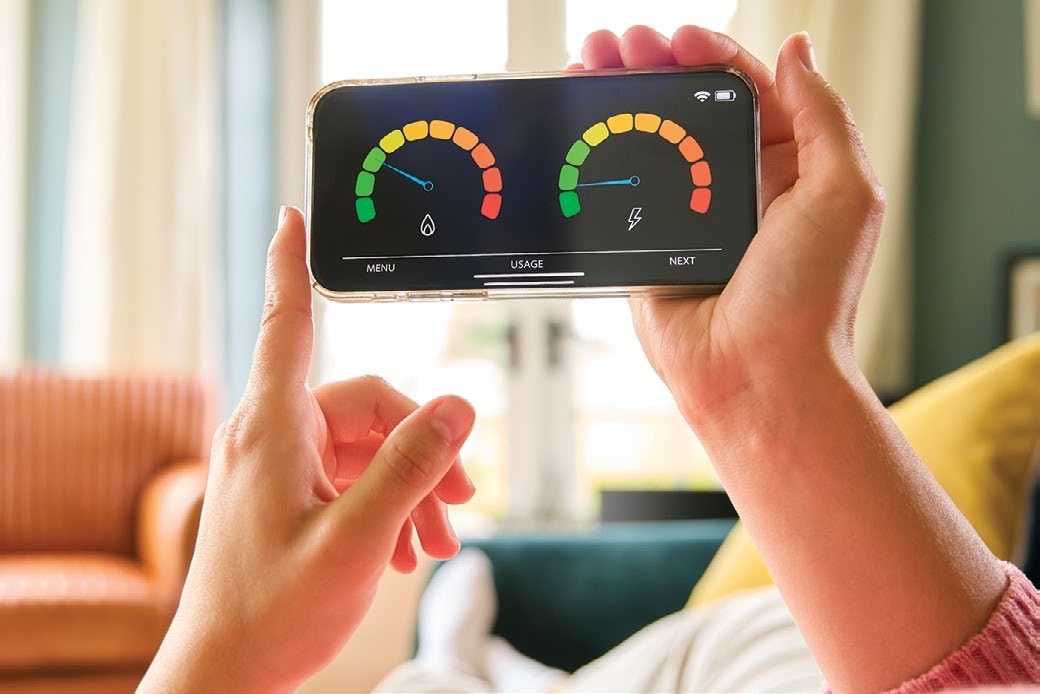Should you switch to a fixed energy tariff?
As energy prices remain volatile and far above pre-2022 levels, is now the time to look for a fixed energy tariff? We check out the latest gas and electricity deals


Brits have felt the impact of rising energy prices in recent years – bills ballooned in 2022 after Russia’s invasion of Ukraine sent the price of energy soaring.
In a double blow for billpayers, the Ofgem energy price cap rose by 2% on 1 October, and will increase by a further 0.2% on 1 January 2025.
The average annual energy bill is currently £1,755 for dual-fuel households paying by direct debit and will go up to £1,758 from the start of 2026. The price cap is a cap on unit prices, not your total bill, so what you pay will depend on how much you use.
MoneyWeek
Subscribe to MoneyWeek today and get your first six magazine issues absolutely FREE

Sign up to Money Morning
Don't miss the latest investment and personal finances news, market analysis, plus money-saving tips with our free twice-daily newsletter
Don't miss the latest investment and personal finances news, market analysis, plus money-saving tips with our free twice-daily newsletter
The price cap can flex based on supply and demand, global events like the war in Ukraine and even the weather.
For those that like a bit more certainty, fixed energy tariffs can better shield you from the ups and downs of wholesale costs.
Around 21 million households are currently on a fixed tariff, according to Ofgem, up from 19 million on 1 April.
Fixed tariffs see you pay the same rate per unit of electricity and gas for the term of the deal (typically 12 months).
This means if the price cap goes up, you are protected from rising prices. However, if the cap goes down, you can end up paying more than those on default tariffs.
So, which type of deal is better? Here’s everything you need to know.
How much does a fixed energy tariff cost?
If you fix your energy, your rates will be locked in for a set period – usually a year. So, regardless of whether the price cap rises or falls, your unit rates and standing charges will remain the same.
This is useful if you value the certainty of knowing exactly what you'll be paying for the year ahead, and could save you money if the price cap increases after you fix your rate. For example, somebody who fixed their energy bills before the 2022 energy crisis would have been protected from soaring prices until their fixed period ran out, potentially saving them hundreds of pounds.
Fixing your tariff doesn’t always make sense, though. There is a risk energy prices will fall over the course of your term, leaving you out of pocket.
For example, someone who fixed their energy bills for a year in April 2025 could have been stuck paying more when the July price cap came into effect, as prices fell by 7%.
That doesn’t necessarily mean it was the wrong decision though – as prices rose by 2% in October and will increase by a further 0.2% in January 2026.
How much a fixed energy tariff costs is determined by the level of the price cap when you lock in a deal, as well as the supplier’s predictions of future price movements.
Make sure you shop around to secure the best rate. You can do this through price comparison sites like MoneySuperMarket, Go.Compare and MoneySavingExpert.com. A number of fixed deals currently on the market are up to 10% cheaper than the current price cap.
Deals that are cheaper than the price cap
- E.On Next - Next Fixed 12m v 102 - 12 month fix. 10.1% less than the current price cap, available to new and existing customers but you must pay by direct debit. Exit fees of £50 per fuel.
- EDF Energy - Simply Fixed Nov26 v10 - 12 month fix. 10% less than the current price cap, available to new and existing customers. £50 per fuel exit fees but a smart meter is not required.
- Outfox Energy - Fix’d Dual Nov25 12M v4.0 - 12 month fix. 9.9% less than the current price cap, available to new and existing customers. You must pay by direct debit and there are £74 per fuel exit fees.
- Ecotricity - EcoFixed - 1 Year Oct 25 v4 - 12 month fix. 8.8% less than the current price cap, available to new and existing customers. Smart meters are required, you must pay by direct debit and there are exit fees of £75 per fuel.
Source: MoneySavingExpert.com (correct as of 21 November 2025).
While these deals are widely available, there may be loyalty deals that only existing customers can access, which offer superior rates to those listed above. Check with your supplier to see if you can benefit from such a rate.
Bear in mind that some deals come with conditions, such as requiring a smart meter or asking you to sign up for other services.
If you have an electric vehicle, there are specific tariffs available that could be cheaper than the deals mentioned above. We look at the best EV energy tariffs in a separate piece.
Should you fix your energy tariff?
Whether you should fix your energy tariff depends on your attitude to risk and which energy price forecast you believe.
Locking into a fixed deal that’s cheaper than the October price cap will mean you pay less than customers on variable tariffs until at least the end of March 2026.
Whether a deal such as this will save you money after next March is less clear as the price cap for the second quarter of 2026 is yet to be decided.
Ofgem will announce the price cap covering the period 1 April to 30 June 2026 by 25 February next year.
However, consultancy firm Cornwall Insights, which is well regarded for its energy forecasts, predicts the price cap will rise to £1,815 from next April – a £57 increase from the January cap. Meanwhile, the July price cap is currently expected to drop slightly from April levels but remain above January levels. Of course, these are just predictions at this stage and may change.
Where energy prices will go from October onwards is even harder to prophesize. However, based on current predictions, it might be worth signing up for a fixed tariff charging well under the current price cap now.
Tom Lyon, energy expert at Compare the Market, said: “Fixed deals may offer peace of mind by locking in pricing for a period of time, but it’s worth comparing them against the current price cap to see if they could save you money.
“And watch out for exit fees, some tariffs may charge you if you switch again before the end of the deal. Taking a little time now to review what’s available could help you avoid unwelcome surprises down the line.”
What is the energy price cap?
The price cap sets the maximum amount that can be charged for standing charges and each unit of energy. It affects customers who are on a standard variable (or default) tariff.
While around 21 million households are on a fixed energy deal, about 34 million households are sitting on the energy price cap.
The price cap is reviewed on a quarterly basis. The unit rates for the current price cap (October to December) are shown below.
| Header Cell - Column 0 | Electricity | Gas |
|---|---|---|
Unit cost (per kWh) | 26.35 pence | 6.29 pence |
Standing charge (daily) | 53.68 pence | 34.03 pence |
These Ofgem figures are national averages. Your actual unit rates depend on where in the UK you live. You can find out more about prices in your area on the energy regulator's website.
Based on the above price cap figures, the typical annual bill is £1,755 from October to December for a dual-fuel household paying by direct debit.
This figure, quoted in pounds, shows what a bill could look like if the cap were to remain at the same level all year.
However, the price cap changes every three months and so billpayers on a standard variable rate will likely pay more or less than this thanks to price variations over the year.
All billpayers – whether on a fixed or variable tariff – will pay more than this if they use more energy.
Does the price cap impact fixed-rate tariffs?
Customers who have already locked into a fixed-rate tariff are not impacted by fluctuations in the energy price cap.
However, those who are shopping around for a new fixed tariff will find that prices are influenced by wider trends in the energy market – including how high or low the price cap is at the time.
Ofgem energy supplier switching rules
If you opt to change providers, suppliers have to complete customer switches within five working days (six if you enter into a contract after 5pm). Failure to do so will mean they have to pay affected customers compensation of £40.
If the supplier you’re moving to fails to switch you across in time, complain to them directly. Should they fail to pay you the compensation you are due, you can escalate your complaint to the Energy Ombudsman, which can resolve the dispute.
Get the latest financial news, insights and expert analysis from our award-winning MoneyWeek team, to help you understand what really matters when it comes to your finances.
Daniel is a financial journalist at MoneyWeek, writing about personal finance, economics, property, politics, and investing.
He is passionate about translating political news and economic data into simple English, and explaining what it means for your wallet.
Daniel joined MoneyWeek in January 2025. He previously worked at The Economist in their Audience team and read history at Emmanuel College, Cambridge, specialising in the history of political thought.
In his free time, he likes reading, walking around Hampstead Heath, and cooking overambitious meals.
-
 Mortgage market reforms: how the FCA's new affordability rules could help you onto the property ladder
Mortgage market reforms: how the FCA's new affordability rules could help you onto the property ladderThe Financial Conduct Authority (FCA) will consult on a range of changes to mortgage lending rules in 2026 to help underserved borrowers
-
 Quality emerging market companies with consistent returns
Quality emerging market companies with consistent returnsOpinion Mark Hammonds, portfolio manager at Guinness Global Investors, selects three emerging market stocks where he'd put his money
-
 Winter Fuel Payment cut to hit ‘1.5 million’ pensioners - what support does your energy supplier offer?
Winter Fuel Payment cut to hit ‘1.5 million’ pensioners - what support does your energy supplier offer?Advice The Winter Fuel Payment is being scrapped for most pensioners this year. But you may be able to access extra support from your energy supplier. Here’s what’s on offer.
-
 What is the Ofgem energy price cap and what does it mean for your bills?
What is the Ofgem energy price cap and what does it mean for your bills?The Ofgem energy price cap is set to rise in October. What exactly is the cap and how does it affect bills?
-
 Rent prices continue to rise but demand slows as cost of living pressures bite
Rent prices continue to rise but demand slows as cost of living pressures biteNews The latest data from Zoopla shows rental growth is expected to slow to 5% as demand decreases
-
 The best credit cards with 0% on purchases
The best credit cards with 0% on purchasesAdvice 0% credit cards are a great way to spread the cost of big purchases - we flag the best deals available now.
-
 Competition watchdog warns drivers still overcharged on fuel prices
Competition watchdog warns drivers still overcharged on fuel pricesAdvice The competition watchdog has revealed that motorists are still paying too much for fuel, a year after its initial investigation. How can you save on fuel costs?
-
 Wood-burning stove vs central heating ‒ which is cheaper?
Wood-burning stove vs central heating ‒ which is cheaper?Advice After energy costs increased again, we compare wood-burning stove vs central heating to find out which is cheaper for your home
-
 Is it cheaper to leave the heating on low all day?
Is it cheaper to leave the heating on low all day?Advice The weather is getting colder and energy bills are rising, but is it really cheaper to leave the heating on low all day or should you only turn it on when you need it?
-
 How much does it cost to run an electric oven?
How much does it cost to run an electric oven?Advice We explain how much making a jacket potato, casserole or pizza in the oven costs you.
